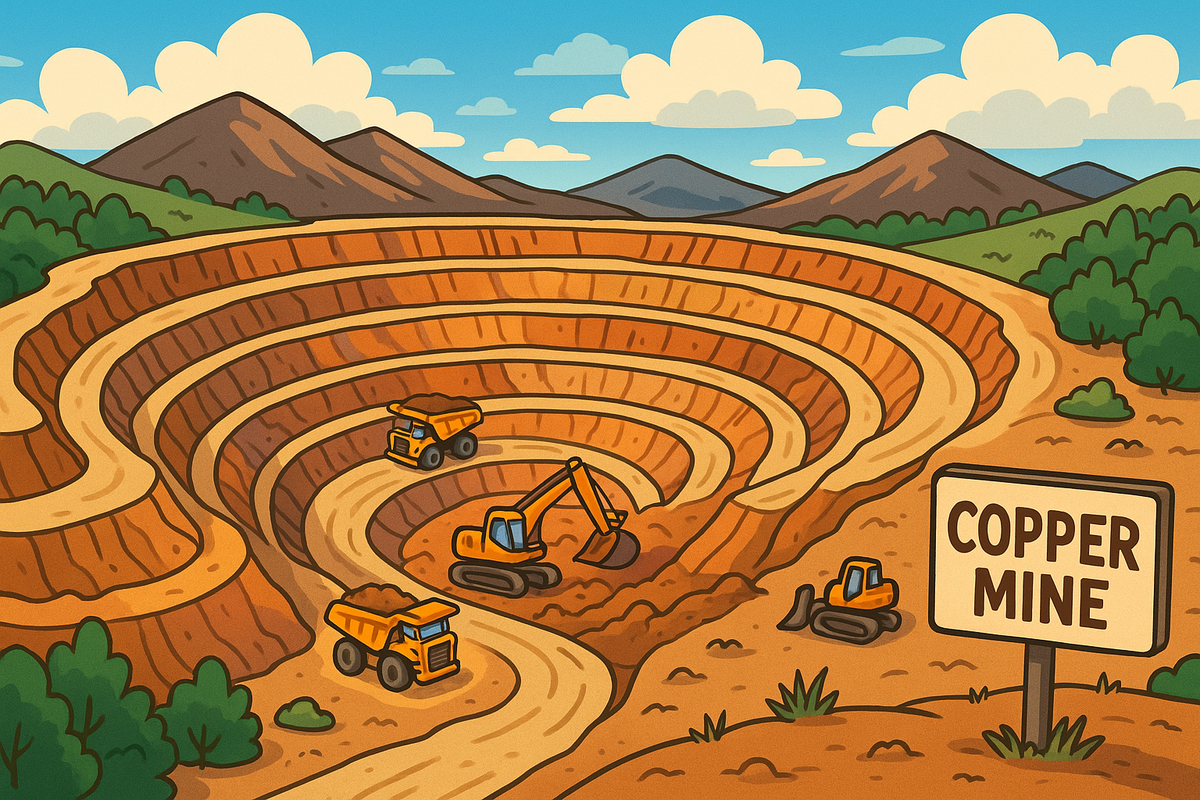
By Miika Makela | WBN News Global, WBN News, WBN News Vancouver, WBN Finance| May 26, 2025 |
Copper is often called “the metal of electrification” due to its unmatched electrical conductivity and critical role in modern infrastructure. As global economies push aggressively toward renewable energy, AI technologies, and power grid modernization, copper demand is expected to soar. However, this surge is colliding with significant production challenges and rising costs, shaping a complex long-term outlook for copper prices and supply.
Why Copper Demand Is Set to Soar
Copper’s role in the clean energy transition is pivotal:
- Electric vehicles (EVs) require 3-4 times more copper than traditional cars for batteries, motors, and wiring.
- Renewable energy systems like wind farms and solar installations depend heavily on copper wiring and components.
- Modernizing aging power grids to handle increased load and integrate distributed energy resources demands vast amounts of copper.
- AI-driven data centers and cloud infrastructure place new demands on reliable, high-capacity electrical components.
The International Energy Agency (IEA) projects copper demand could rise by over 60% by 2030. Meeting climate targets and advancing digital infrastructure means this trend will likely continue well beyond the next decade.
Rising Production Costs: A Key Factor
While demand climbs, copper production costs are increasing due to several factors:
1. Declining Ore Grades
Existing copper mines are depleting their highest-grade ores, requiring miners to extract and process more material for the same copper yield. This drives up energy consumption, labor, and equipment wear, pushing production costs higher.
2. Energy and Environmental Costs
Mining and refining copper is energy-intensive. As carbon regulations tighten and energy prices fluctuate, operational costs rise. Additionally, investments in environmentally sustainable mining practices—such as water recycling and reduced emissions—add to upfront capital expenditures.
3. Labor and Regulatory Pressures
Stricter labor laws, community engagement requirements, and regulatory compliance in key mining countries increase operational complexity and costs.
4. Geopolitical Risks and Supply Chain Challenges
Political instability, export restrictions, and logistical hurdles add uncertainty, often reflected in risk premiums embedded in copper prices.
The Long-Term Outlook for Copper Prices
Unlike short-term price spikes driven by speculation or temporary supply disruptions, the long-term price trajectory for copper reflects structural demand growth and escalating production costs.
Steady Upward Pressure on Prices
With demand growing steadily and supply constrained by geological, environmental, and social factors, copper prices are expected to trend upward over the coming decades. Analysts predict that while prices will fluctuate, the base level of copper prices is likely to rise compared to historic averages.
Market Volatility Remains
Copper remains sensitive to macroeconomic factors such as global economic growth, trade policies, and currency fluctuations. However, the fundamental supply-demand imbalance tends to anchor prices above previous lows.
Investment and Strategic Stockpiling
Recognizing copper’s strategic importance, governments and industries are increasingly stockpiling copper or investing in mining capacity, which can affect market liquidity and prices.
Implications for Electricity Infrastructure and AI
The intertwined futures of copper and electrification highlight several critical implications:
- Power Grid Upgrades May Face Higher Costs: As copper prices rise, utilities and governments may experience budgetary pressures in expanding and modernizing electrical infrastructure.
- Increased Investment in Recycling and Efficiency: To mitigate cost and supply risks, industries will push for improved copper recycling and more efficient use in components.
- Potential for Material Innovation: While copper’s unique electrical properties are hard to replace, rising costs may accelerate research into alternatives or novel materials for specific applications.
- AI and Data Center Growth Demand Stable Supply: AI’s growing electricity appetite depends on stable, cost-effective copper supplies to build resilient data centers and communication networks.
Conclusion
Copper’s future is shaped by a potent mix of soaring demand, rising production costs, and supply-side constraints. This combination points to a long-term trend of increasing copper prices, with ongoing volatility reflecting economic and geopolitical factors. For industries powering the green energy transition and AI revolution, understanding these dynamics is critical to planning investments and innovation strategies.
Addressing these challenges will require a strong focus on speeding up the development and approval of new copper projects to bring additional supply online faster. Investments in exploration, streamlined permitting processes, and enhanced mining technologies will be critical to closing the gap between demand and production. Without accelerating new production, the growing demand from electrification and AI infrastructure could face significant supply constraints and rising costs that impact industries worldwide.
Miika Makela, CFA
https://www.linkedin.com/in/miika-makela-cfa-24aa056/
#Copper Demand #Mining Industry #Electric Vehicles #Power Grid #AI Infrastructure #Commodities



